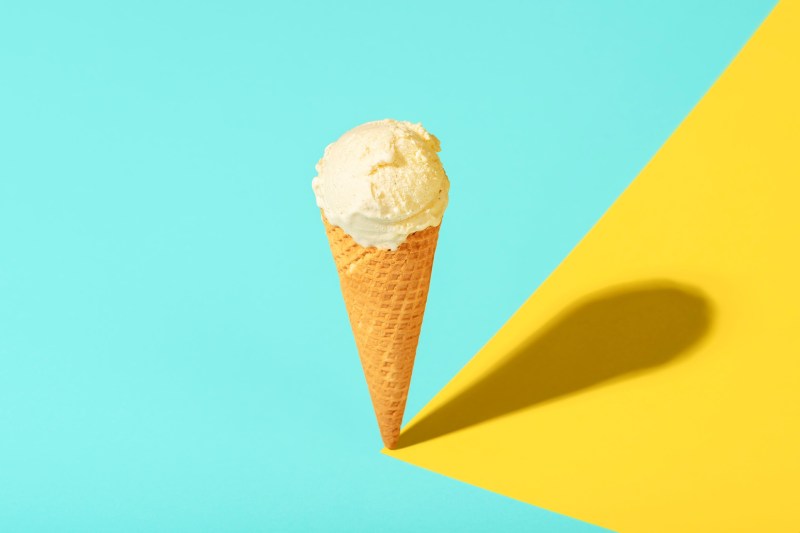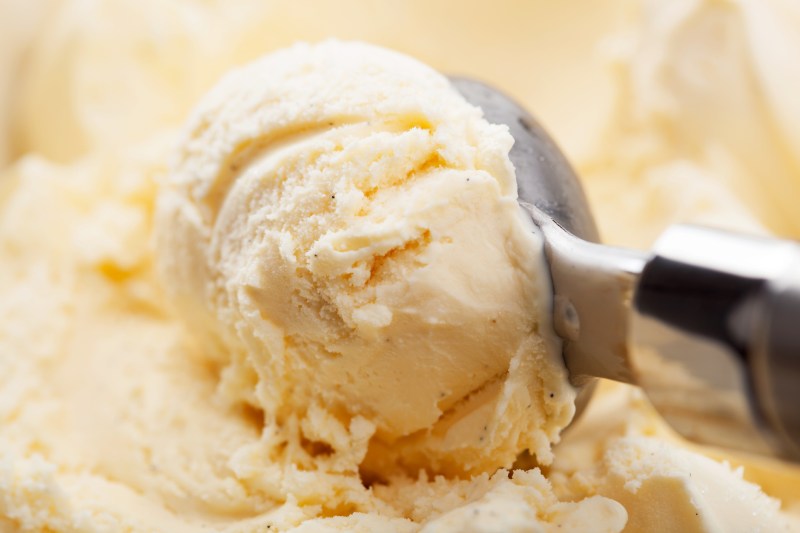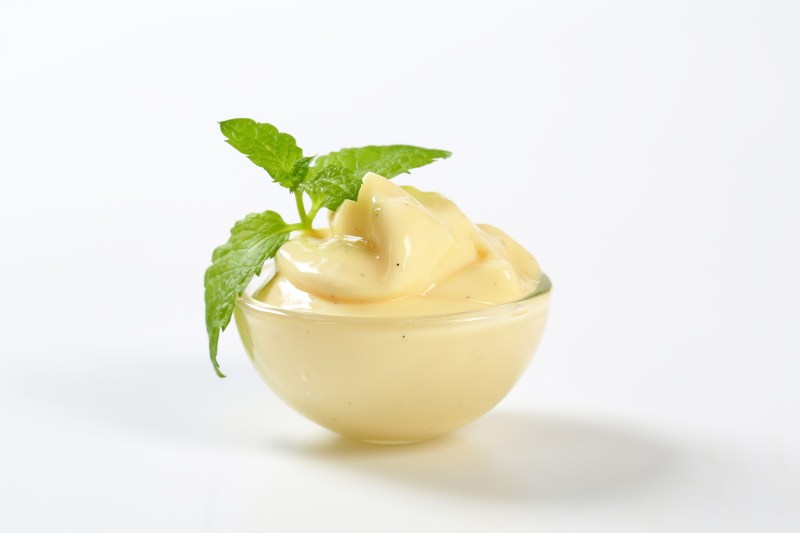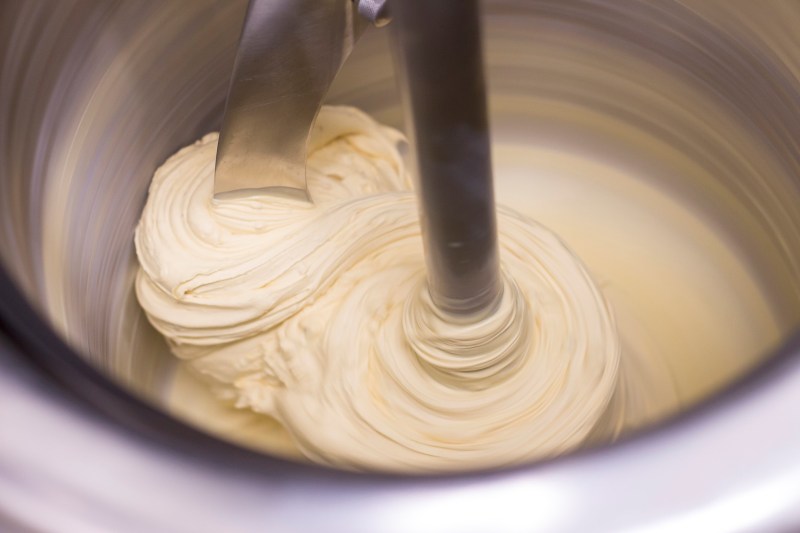
Of the many intimidating desserts out there, ice cream may be the most popular one that you’ve never attempted to make. Well, we’d like to change that, with a little help from an industry expert.
Related Reading
As Julian Plyter, Head of Product at Marco Sweets & Spices says, you need the right equipment. “There’s a big bummer right upfront when it comes to making ice cream at home: In order to do it well, you need an ice cream machine,” he says.
Once you’re set up with that main tool of the trade, there are still decisions that need to be made and styles to adhere to. Decide on the type of base you’ll make,” Plyter suggests. “I break ice cream down into two basic categories: Philadelphia-style and custard-style. Philadelphia-style is what I prefer for my fruit ice creams. For flavors in the vanilla-caramel-choco-nut-sphere, I really like custard-style.”

Remember that your base, whatever it may be, needs to be cold. Chilling it down really just means throwing it in the freezer overnight. But Plyter likes to refer to this step as aging, as there’s some cool science involved. “The proteins in the egg — and the milk, even — bind more of the water, and less free-floating water in your base means smoother, less icy ice cream later on. It’s a win-win.”
When it comes to egg-less ice cream, Plyter cooks the milk and sugar together. “You’re applying heat only to dissolve the sugar and steep in any flavors that need it, like split vanilla beans,” he says. After heating, he adds the cold cream, making for a quicker overall cooling process.
What about adding fruit? It’s all about maceration. “Toss your berries, sliced however you like them, with sugar to coat them, squeeze on a little lemon juice, and let them sit at room temp for a few hours, turning them over with a spoon every once in a while,” he says. “When done, strain the liquid away, and you’ll have softer, sweeter, less water-full pieces of fruit that will incorporate beautifully into your ice cream.”
He almost always adds the fruit when the ice cream is done. “Just fold it into your finished ice cream, and then harden in the freezer,” he says. And he tends to make larger than necessary batches of fruit in order to have some extra to top with.
Custard Ice Cream

When it comes to custard, there’s often a fear factor. Plyter says people are often afraid they’ll scramble their eggs by adding the liquid that’s too hot. His advice: Relax. Also, follow his steps, below.
- I start my custard ice creams the same way as the Phillies, by heating the milk and sugar together. (I know, I know, your recipe says to whisk your yolks and sugar until pale and thickened, but there’s simply no need for this.)
- In a bowl, meanwhile, whisk up your yolks.
- When the milk is just at the boil, kill the heat. Add about a quarter of the dairy to your yolks, calmly set the pan back down (not too far away, hopefully), and whisk those things together. Repeat.
- Then, add the rest of the dairy as you whisk (at this point, with half that boiling-hot milk already in there, you don’t need to do this particularly slowly), and then pour it all back into the pot.
- Put this over low (repeat after me: “LOW”) heat, and stir constantly but slowly with a wooden spoon. When you can lift the spoon out and draw a clean trail on the back with your finger, your custard is done. Turn off the heat immediately, and add your cold cream. This will stop the cooking, and accelerate cooling!
When you’re at the end, don’t forget to strain. It’ll get rid of any leftover egg proteins swimming around and anything else you may have left in the mix (a stray vanilla bean, perhaps).
General Tips

Plyter admits that making ice cream tends to involve a little more practice and patience than a lot of dishes. But you’ll get better each and every time. Even cooler, you’ll end up with a rewarding, personalized dessert.
- Don’t walk too far away from the dairy that’s on the stove, because boiled-over sweetened milk will not help you have a better day. (This is one of those great lessons that needs learning only once.)
- For less icy fruit ice cream, draw some of the water out of the fruit by macerating it with sugar beforehand. (Extra tip: After you strain it, you’ll have a flavorful, natural fruit syrup you can use in cocktails or as an ice cream topping!)
- To infuse subtler flavors like vanilla beans, leave them in the hot milk, covered, for 30 minutes or so after heating; This is called “steeping.” Reheat the milk before proceeding.
- Salt. I don’t use it in fruit ice creams (except banana and a couple of other tropicals), but for anything custard-based, I find a pinch of salt really makes the flavors vibrate. Start with a small pinch, adding it once your base is cooled (before aging), and taste as you go. (Also, during aging, salt will bind more water!)
- If you want to add alcohol to your ice cream, that’s great! Add this after your custard is cooled, and taste as you go. Be aware that alcohol is a freezing inhibitor, so if you use too much, your ice cream will have trouble setting up!
- If you’re adding anything very acidic, lime juice, say, you’re better off stirring this in when you’d add fresh fruit, at the end of churning.
- Strain your custard bases!
- When you want an inclusion — chocolate chips, toffee pieces, blackberries, bits of squid, whatever — fold them in at the end of churning. Your machine will not last long if you try to freeze a base that already has chips in it.
- You will always need to harden your ice cream after churning, for at least a few hours.


